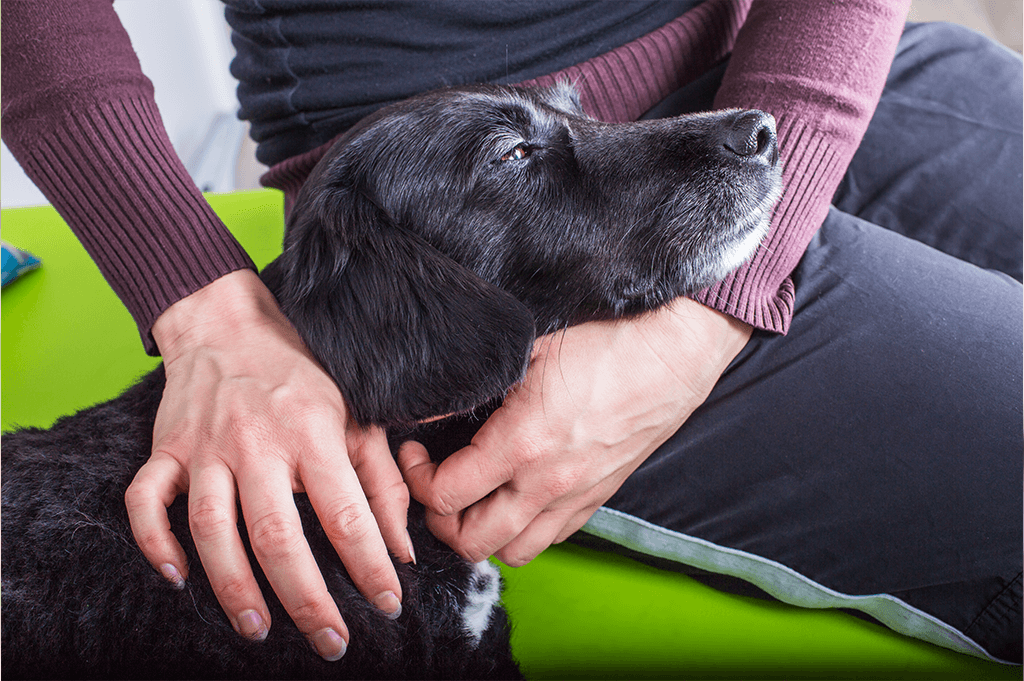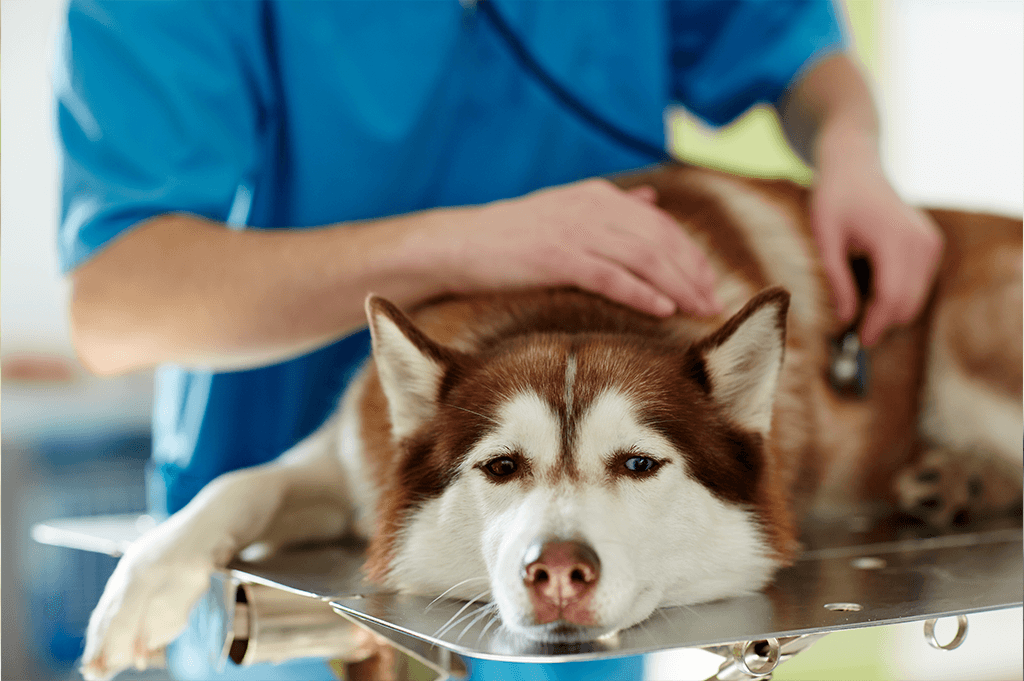Cushing’s disease is one of the most common endocrine problems found in older dogs, affecting the production of the stress hormone, cortisol. It can often be difficult for owners to spot and for vets to diagnose the problem, as the symptoms can be similar to other conditions. We’ve spoken to our pet health expert on everything related to Cushing’s syndrome in dogs, the symptoms, and how best to manage them.
What is Cushing’s disease?

Otherwise known as hyperadrenocorticism, Cushing’s syndrome causes your dog to produce high levels of cortisol, resulting in a range of symptoms. Around 85% of cases in dogs are caused by a small, benign tumour within the pituitary gland, a pea-sized gland at the base of the brain. This tumour can result in increased levels of ACTH, a hormone which stimulates the adrenal gland to produce excessive amounts of cortisol. Cushing’s can also be caused by a small tumour within the adrenal gland, which is more likely to be cancerous.
Symptoms

The high levels of circulating cortisol caused by Cushing’s affects the mobilisation of fat reserves and metabolism, and can present a variety of symptoms, including:
– Increased drinking and urination
– Increased appetite
– Lethargy
– Panting
– Hair loss
– Skin problems
– Weight gain
– Abdominal swelling
– Muscle wastage and weakness.
Diagnosis
Unfortunately, Cushing’s can be a difficult issue to diagnose, and many owners mistake the symptoms for changes which occur naturally through ageing. Before diagnosis, your vet will want to know about any symptoms your dog has exhibited, as well as their general health history. They’ll also undertake a clinical examination and blood tests, helping to rule out any other causes for the symptoms. Cushing’s is more prevalent in certain dog breeds, including Poodles, Dachshunds, Boxers, Cocker Spaniels, and some terrier breeds.
Treatment

Treatment for Cushing’s disease aims to combat the excessive production of cortisol, typically through medical management, such as daily tablets. For dogs exhibiting mild symptoms, treatment with medicine may not be necessary, although your vet may want to more closely monitor your pet.
Effective treatment can improve your dog’s quality of life, reducing the risks of secondary problems developing, like diabetes mellitus, high blood pressure, pancreatitis, liver disease and secondary infections. As Cushing’s is progressive, symptoms can become worse if the condition is left untreated. Following treatment, your vet will continue to monitor your pet’s progress, and you should keep a close eye on your dog’s symptoms at home.
If you notice your dog presenting any of the symptoms of Cushing’s disease, we’d always recommend you contact your vet. If you’re worried about your dog becoming ill, you might want to think about taking out insurance. At The Insurance Emporium, our tweakable Dog Insurance allows you to tailor your policy to suit you and your pet’s needs. You could even receive up to 30% discount*! Head on down to The Insurance Emporium to find out more.
* The 30% discount is made up of 20% Introductory Discount plus 10% Multi-pet Discount (if appropriate). The Introductory Discount is available for the first 12 premium payments on lunar and calendar monthly policies or one premium payment on annual policies.
All content provided on this blog is for informational purposes only. We make no representations as to the accuracy or completeness of any information on this site or found by following any link on this site. We will not be liable for any errors or omissions in this information nor for the availability of this information. We will not be liable for any loss, injury or damage arising from the display or use of this information. This policy is subject to change at any time.


